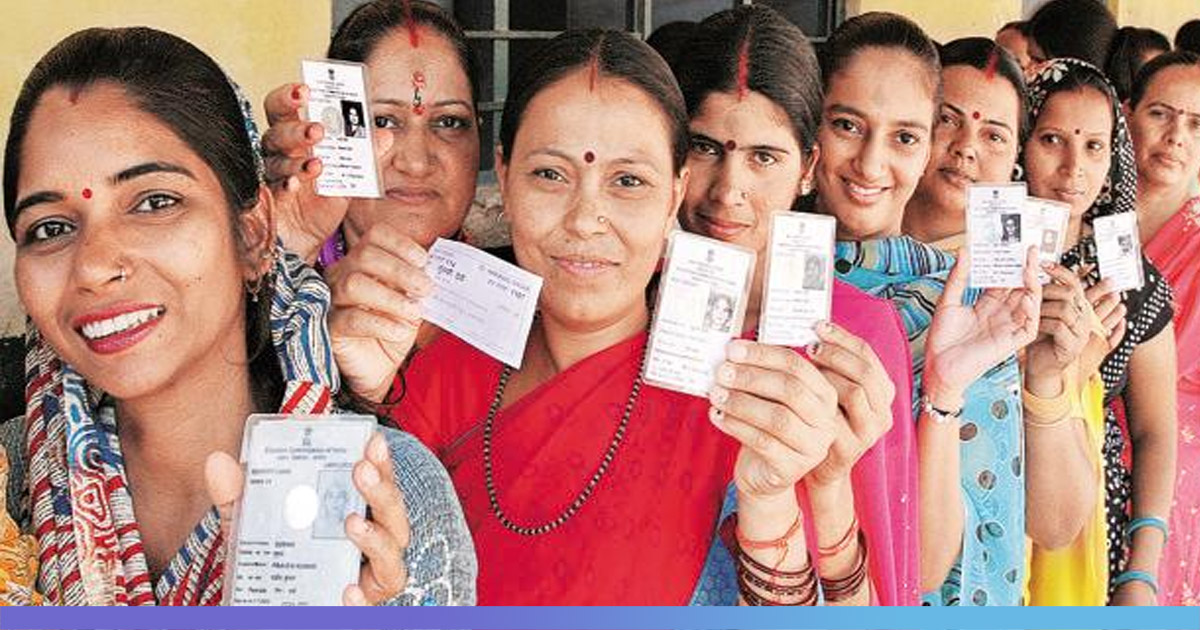
21 Million Women Are Denied Their Right To Vote Because Their Names Aren't On Voters' List
17 April 2019 7:26 AM GMT
Perhaps the most distressing aspect of our current election system is that millions of women in India have not been registered to vote even though they are over eighteen years old and eligible. The disenfranchisement of women voters is hopefully not quite in the same league as the ‘dark arts’ of voter suppression around the world. However, it is a deeply worrying phenomenon of our electoral systems. The data points towards a major problem: the most reliable measure of population, the 2011 census, suggests that by 2019 the total population of women (aged 18 and above) in India will be 97.2 per cent of the total men’s population (Table below). Consequently, it is only to be expected that the total electorate of women voters should be the same percentage of the total male electorate—or at least very close to this figure. However, the Election Commission data for 2019 states that women voters are only 92.7 per cent of male voters. This difference between what it should be, 97.2 per cent, and what it is in reality, 92.7 per cent, indicates that there is a 4.5 per cent shortfall of women voters. Why is this? And is it significant? It is now clear from past census and Election Commission data that this under-representation of women has occurred election after election, decade after decade. The worst disenfranchisement of women was in the 2014 Lok Sabha election when 23.4 million women were denied their right to vote.
For now, we are only focusing on the problem in the 2019 election.

In fact, while 4.5 per cent may seem a small percentage, when converted into actual numbers of women, the scenario is staggering (see Table 1.2.13). The 4.5 per cent of missing women translates into as many as 21 million women who are denied their constitutional right to vote simply because their names are not registered in the voter lists around the country.

An indication of how large this figure of 21 million missing women is that it is equivalent to every single woman in any one of the following states not being allowed to vote: Jharkhand, Haryana, Telangana, Kerala or Chhattisgarh! Or even worse: 21 million missing women translates into 38,000 missing women voters in every constituency in India on average. There are a large number of Lok Sabha constituencies—more than one in every five seats—that are won or lost by a margin of less than 38,000 votes. The estimate of 21 million missing women voters is based on the percentage/ratio of women to men in the electoral rolls compared with the percentage/ratio in the census. Alternatively, if we do not use ratios but compute the absolute numbers of women according to the census compared with the absolute numbers in the electoral rolls, the number of missing women is even higher, at a staggering 28 million missing women voters. The large number of women voters missing from the electoral rolls also suggests that the total electorate in India should be above the official 895 million, perhaps even more than 915 million. The Election Commission cannot be blamed for this massive failure. On the contrary it is in spite of the huge effort that they make year after year to enrol women voters, with a range of outreach programmes targeted specially at women. It is a result of a combination of social and political factors and what is worrying is that it is worsening over time.

There are major biases in the extent of missing women between regions with some states having a much higher level of disenfranchised women than others.
In the 2019 Lok Sabha elections, the top three states which will have the largest number of women who are not registered despite being eligible voters are Uttar Pradesh, Maharashtra and Rajasthan (see Table 1.2.15). These three states will account for over 10 million of the 21 million missing women voters in 2019. It is shocking that in Uttar Pradesh, 85,000 women voters on average will be deprived of the right to vote in every single constituency. Moreover, among the bigger states, those which have the best record with the lowest under-representation of women are from the south of India: Tamil Nadu and Andhra Pradesh. Even among the small states of India, the two worst offenders are from the Hindi belt: Uttarakhand and Himachal Pradesh.
An appeal to the Election Commission of India: We need to take note of this shame on India and immediately take steps to rectify it before the 2019 Lok Sabha elections. India is facing an extraordinary situation that is terribly unfair to the women of India—21 million women who are entitled to vote will be denied the right to do so because their names are not on the voters’ list. There may not be enough time to rectify the voters’ electoral rolls before the 2019 Lok Sabha elections. In view of this, the rule should now be: Any woman who comes to a polling station in the constituency where she resides and is over eighteen years old, be allowed to vote.
This article is an excerpt from Prannoy Roy and Dorab R Sopariwala’s book “The Verdict: Decoding India’s Elections, Vintage.” The book mines past electoral trends to present the possibilities of the 2019 elections.
Also Read: India’s Electoral System Is Apathetic Towards Migrant Workers Who Move From One State To Another
 All section
All section













